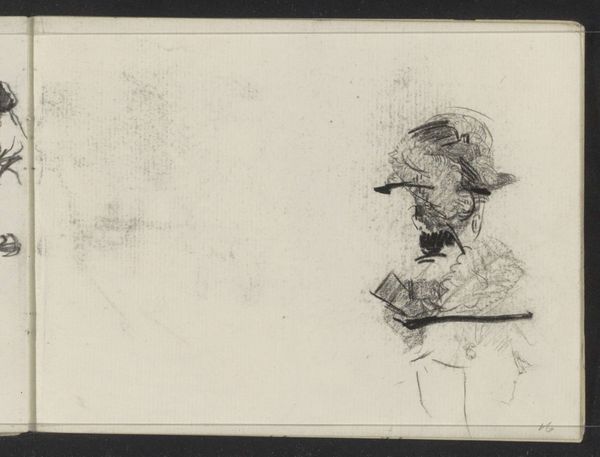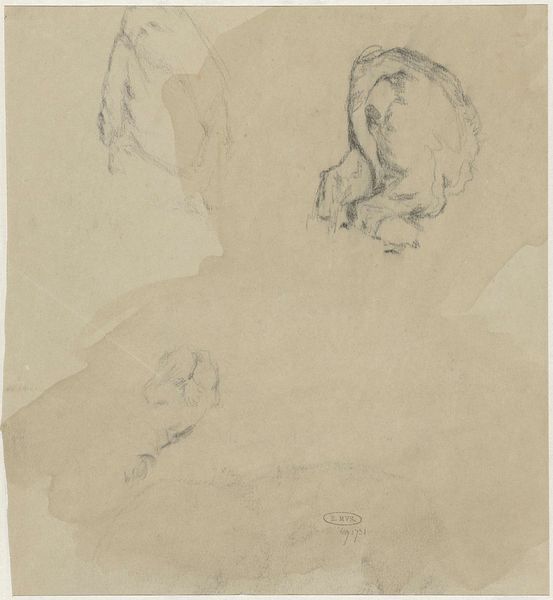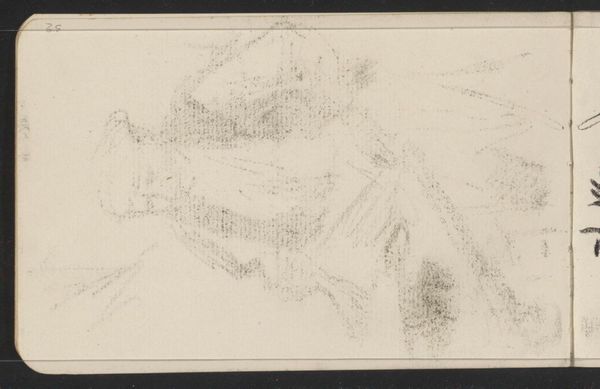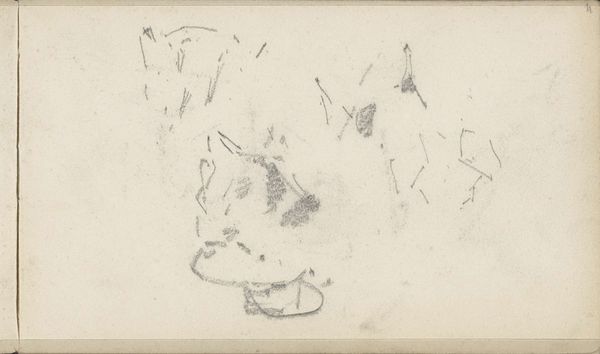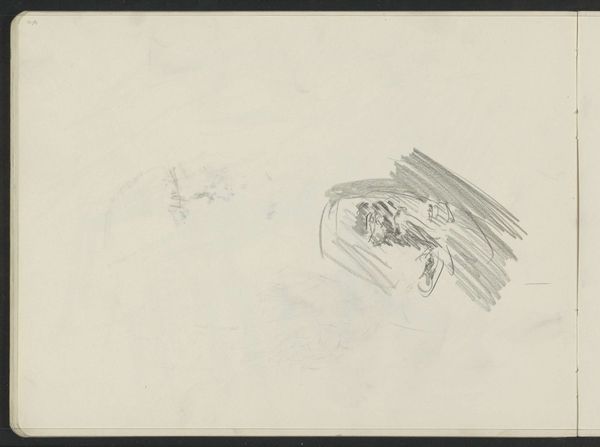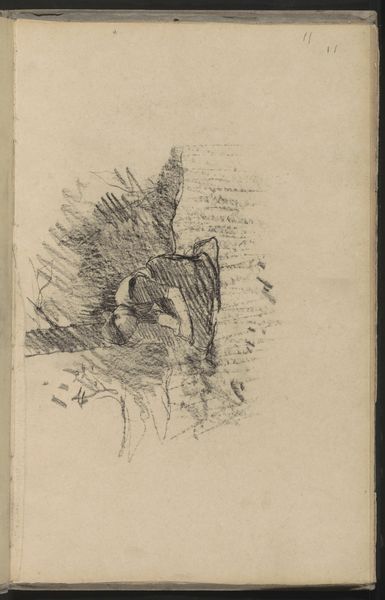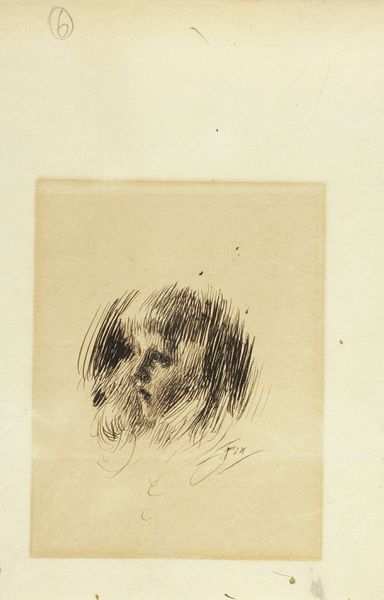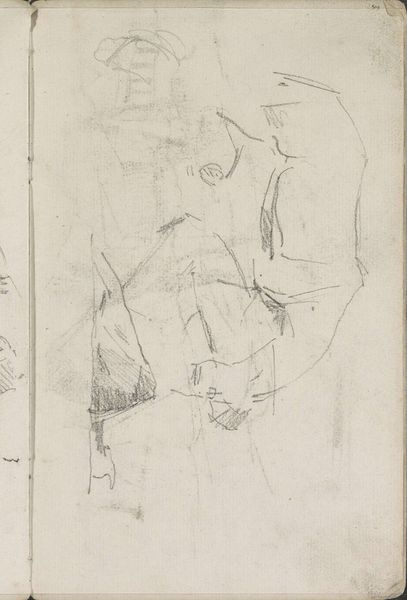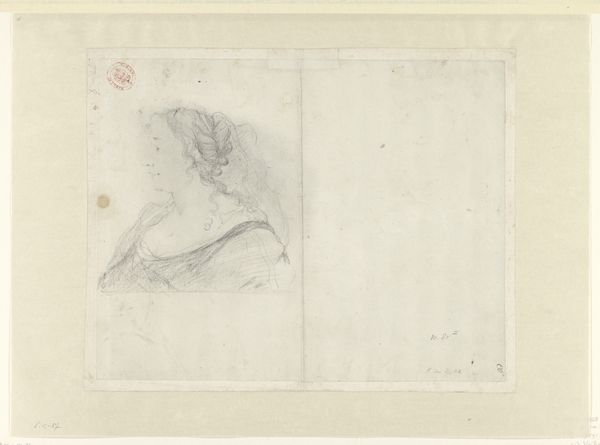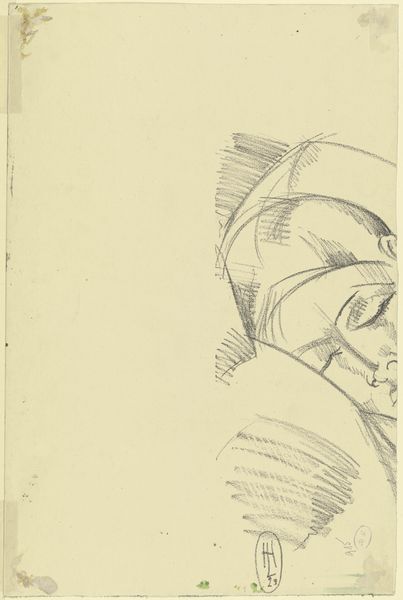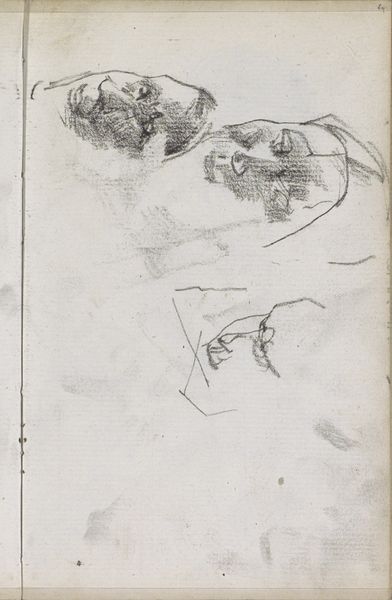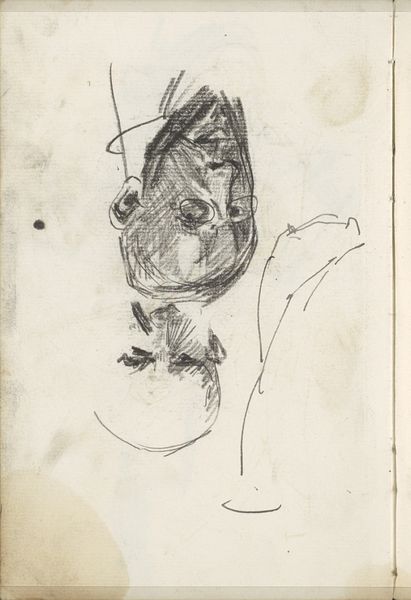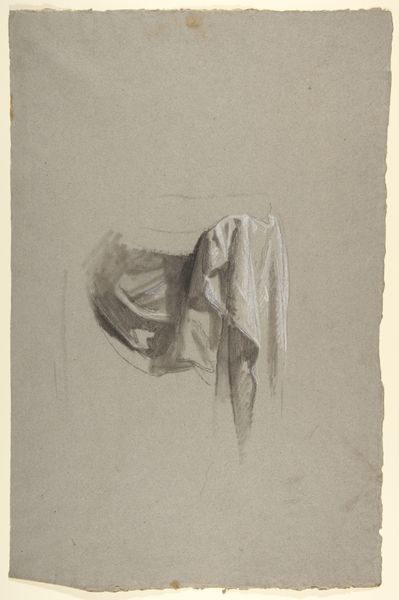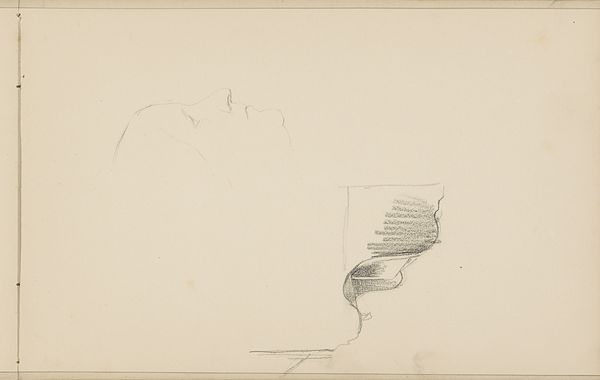
drawing, pencil, graphite
#
drawing
#
comic strip sketch
#
aged paper
#
light pencil work
#
sketch book
#
landscape
#
figuration
#
personal sketchbook
#
idea generation sketch
#
sketchwork
#
geometric
#
ancient-mediterranean
#
pencil
#
graphite
#
sketchbook drawing
#
storyboard and sketchbook work
#
sketchbook art
Dimensions: height 134 mm, width 105 mm
Copyright: Rijks Museum: Open Domain
Curator: August Allebé’s “Studie van een Sfinx,” created sometime between 1848 and 1927 and currently held at the Rijksmuseum, presents a fascinating glimpse into the artist’s process through the medium of pencil on paper. Editor: There's something so immediate and raw about this sketch. It feels almost tactile, as though I could reach out and feel the grain of the graphite on the paper. The lines, while seemingly simple, create a powerful sense of volume and weight, evoking a mysterious mood. Curator: Indeed. The use of pencil is critical. Pencil as a readily available and relatively inexpensive medium democratized drawing. Artists could produce studies such as these without the financial burden associated with more established media, contributing to a greater circulation of images and ideas within the artistic community. Editor: You are right. Considering its formal construction, notice how the geometric composition lends a sense of stability and monumentality to the sphinx, while the use of shading conveys both texture and dimension. But the drawing itself is full of uncertainty; the geometricity is only loosely drawn. Curator: Precisely. I wonder about its potential purpose. Was this intended as a preliminary sketch for a larger composition, or perhaps a study aimed at familiarizing the artist with ancient Egyptian forms? Sketchbooks were important in those years for artists to collect ancient motives and compose with those ideas later. Editor: Maybe it served as inspiration to other drawings or works? It captures the essence of the subject in an economical manner. There’s a potent expressive quality within that constraint. But, regardless of intention, I appreciate the interplay of light and shadow, which animates the stone, investing the mythological figure with an emotive depth that belies the simple pencil work. Curator: Looking at this “Studie van een Sfinx” from the Rijksmuseum really emphasizes the relationship between material conditions and artistic practices of that time. Editor: For me, this intimate sketch gives us a rare glimpse into a personal engagement with form, inviting contemplation and analysis.
Comments
No comments
Be the first to comment and join the conversation on the ultimate creative platform.
